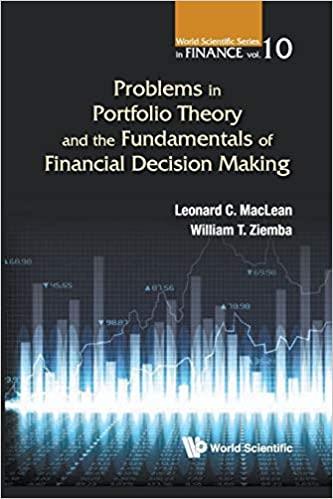Question
1. [8 pts] The Smith family is planning for their daughters education. She just turned 5 years old and will be 18 when she starts
1. [8 pts] The Smith family is planning for their daughters education. She just turned 5 years old and will be 18 when she starts university. They are planning to make monthly deposits of $300 into an RESP (Registered Educational Savings Program). Deposits are made at the end of each month. They anticipate that they can earn a return of 4.8% APR compounded monthly on their RESP. When their daughter starts university, she will withdraw $20,000 to pay for her 1st year. The balance will be paid out at the end of each year (end of 1st, end of 2nd and end of 3rd) in equal amounts to pay for the subsequent years. During those 3 years the Smiths hope that the account will earn 6% APR compounded annually. How much can their daughter expect to withdraw each year? 2. [11 pts] Smithson Foods is looking at purchasing new equipment for mixing pastry to make pies. Two different manufacturers are being considered. The Jorgans Mixmaster costs $24,000 and requires annual maintenance costs of $1,950 per year. The Xiaolong Mixer costs $20,000 but with annual maintenance costs of $2,600 per year. Assume that maintenance costs are incurred at the end of the year, including the final year. Regardless of which machine is chosen, Smithson intends to replace the mixer in 7 years. In 7 years, it is estimated that a used Jorgans can be sold for $6,500 whereas a used Xiaolong would sell for $5,800. If Smithson uses a rate of 18% compounded annually to evaluate equipment investments, which machine should they choose? (which machine has lower NPV of costs?) 3. [21 pts] Graves Lighting in considering the replacement of a metal stamping machine at their facility in Dayton, Ohio. Machine A will cost $37,000, have annual maintenance costs of $2,800 (payable at the end of the year), need a major refit after 8 years costing another $7,000, and have a resale value of $11,000 at the end of its 15th year life. Machine A offers many productivity savings over the machine it replaces and is expected to generate savings of $9,000 per year (assume this accrues at the end of the year). The alternative is to buy the less expensive Machine B at a cost of $27,000. The annual maintenance will only be $2,000 per year. It will also need a refit after 8 years at $5,000 and have a resale value of $8,000 at the end of its 15th year life. It is not as efficient as Machine A and will generate savings of just $7,000 per year. If Graves uses an interest rate of 15% compounded annually to evaluate projects, which is the better choice based upon Net Present Value (NPV)?
Step by Step Solution
There are 3 Steps involved in it
Step: 1

Get Instant Access to Expert-Tailored Solutions
See step-by-step solutions with expert insights and AI powered tools for academic success
Step: 2

Step: 3

Ace Your Homework with AI
Get the answers you need in no time with our AI-driven, step-by-step assistance
Get Started


